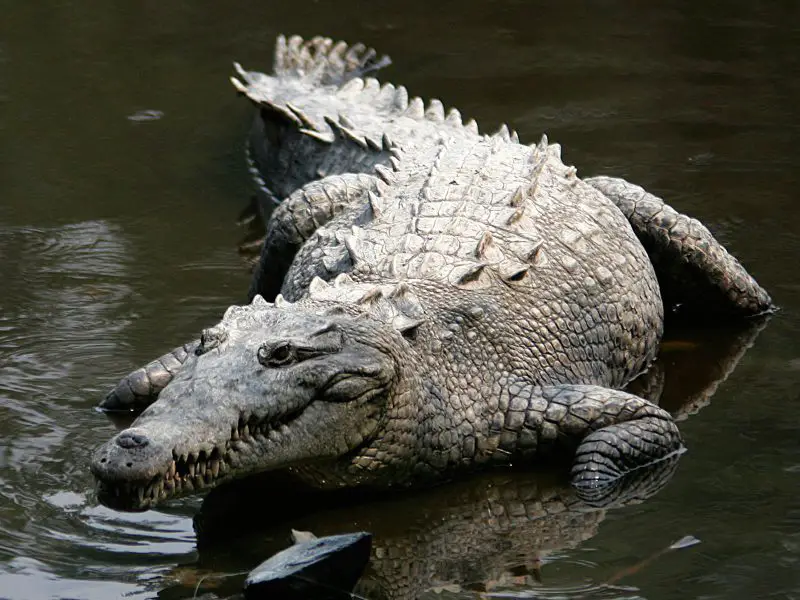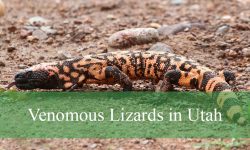Florida is known for its beaches, sunshine, and endless outdoor adventures—but beneath its tropical paradise lies a chilling truth few residents truly understand. The Sunshine State is home to America’s only native crocodile species, and while they may appear calm basking in the sun, these prehistoric predators are anything but harmless.
The American Crocodile, a species once thought to be vanishing from U.S. waters, has made a stunning comeback in recent years. From the mangroves of South Florida to the canals of Miami, their growing numbers have brought humans and crocodiles dangerously close together.
In this article, we’ll reveal the shocking truths about crocodiles in Florida—their biology, deadly strength, hunting strategies, and the surprising ways they interact with humans. We’ll also explore what’s driving their population boom, how to identify crocodiles versus alligators, and the steps you can take to stay safe in crocodile country.
Prepare to be fascinated, and maybe a little terrified, by what you’re about to learn.
The Crocodile’s Return: Florida’s Prehistoric Predator

A Rare Species on the Rise
The American Crocodile (Crocodylus acutus) is the only crocodile native to the United States. For decades, it was listed as an endangered species due to habitat loss and hunting. However, thanks to strong conservation efforts and warm Florida weather, their population has surged from fewer than 300 individuals in the 1970s to over 2,000 today.
These crocodiles now thrive in South Florida’s coastal areas, particularly around Everglades National Park, Biscayne Bay, Key Largo, and the Turkey Point Nuclear Plant canal system, where the warm waters create ideal nesting conditions.
Why Florida Is Perfect for Crocodiles
Florida’s subtropical climate offers year-round warmth, brackish water, and abundant prey—all the essentials for crocodile survival. The state’s vast network of canals, estuaries, and mangroves also provides them with endless hunting and nesting grounds.
As human development expands into these areas, the line between human and crocodile territory continues to blur, leading to more frequent—and often dangerous—encounters.
Crocodile vs. Alligator: The Key Differences
Florida is the only state in the U.S. where both alligators and crocodiles coexist, and while they may look similar, there are critical distinctions between them that every Floridian should know.
Feature |
American Crocodile |
American Alligator |
|---|---|---|
Snout Shape |
Long, narrow, V-shaped |
Broad, U-shaped |
Color |
Light gray or olive |
Dark gray or black |
Habitat |
Coastal saltwater and brackish zones |
Freshwater swamps and lakes |
Behavior |
Shy but territorial |
Bold and opportunistic |
Temperature Range |
Prefers warm tropical climates |
Can tolerate cooler temperatures |
In southern Florida, crocodiles are found mainly in saltwater or coastal areas, while alligators prefer freshwater. However, as climate change and habitat expansion continue, their ranges increasingly overlap.
The Terrifying Power of Florida Crocodiles
Strength and Speed
Crocodiles are ancient predators built for stealth and strength. A full-grown male can exceed 16 feet in length and weigh over 1,000 pounds. Their bite force is among the strongest in the animal kingdom—measured at over 3,700 pounds per square inch, enough to crush bone and shell instantly.
Despite their bulky appearance, crocodiles are fast both in and out of water. They can lunge forward at speeds of 9–10 mph on land and swim up to 20 mph in short bursts. This makes them formidable ambush predators capable of overpowering prey—and occasionally startling unsuspecting humans.
Night Hunters
Crocodiles are nocturnal predators. At night, their reflective eyes can be seen glowing red in the water as they stalk prey silently. They often float just beneath the surface, with only their eyes and nostrils exposed, waiting for an opportunity to strike.
Their prey includes fish, birds, turtles, and small mammals—but in rare cases, they’ve been known to attack dogs and even humans who stray too close to the water’s edge.
Where Crocodiles Live in Florida
Everglades National Park
The Everglades is the heart of crocodile territory in Florida. Mangrove forests, tidal creeks, and estuaries provide perfect conditions for nesting and feeding. Female crocodiles build mounded nests from vegetation and mud during the dry season (March to May), laying 30–60 eggs.
Biscayne Bay and Key Largo
These areas have seen a sharp rise in crocodile activity due to warm coastal waters and abundant fish populations. Locals occasionally report seeing crocodiles sunning themselves on docks or swimming near marinas.
Turkey Point Nuclear Plant
One of the most unusual crocodile hotspots in Florida is the Turkey Point Nuclear Generating Station. The cooling canals surrounding the plant maintain stable temperatures year-round, attracting crocodiles seeking warmth. Ironically, this human-made environment has become one of the most successful breeding sites for the species.
Suburban Miami
Yes, even urban Miami isn’t immune. Crocodiles have been spotted in golf course ponds, residential canals, and swimming pools. These sightings underscore how deeply integrated crocodiles have become into Florida’s landscape.
How Dangerous Are Crocodiles to Humans?
Rare But Real Attacks
Although crocodile attacks in Florida are rare, they are not unheard of. According to the Florida Fish and Wildlife Conservation Commission (FWC), there have been fewer than a dozen confirmed crocodile attacks in modern history.
However, their rarity doesn’t make them less terrifying. Crocodiles are territorial, especially during mating season, and can become aggressive if they feel threatened or if humans venture too close to nesting sites.
Real-Life Incidents
- 2014: A man kayaking near the Turkey Point canals reported being chased by a large crocodile after accidentally approaching a nesting area.
- 2017: A crocodile was found resting on a docked yacht in Key Largo, startling residents.
- 2021: A crocodile attacked a dog near Coral Gables after the pet entered a canal—luckily, the dog survived after a quick rescue.
These encounters are reminders that crocodiles, though less common than alligators, are unpredictable and highly territorial.
Why Crocodile Encounters Are Increasing
Climate Change and Habitat Expansion
As Florida’s winters grow warmer, crocodiles are expanding their range northward. They’re now appearing in areas once too cold for them to survive, such as Palm Beach County and beyond. Rising sea levels have also transformed freshwater zones into brackish environments ideal for crocodiles.
Urbanization and Canals
Florida’s extensive canal systems, designed for flood control and irrigation, have inadvertently created prime crocodile habitats. These canals connect to coastal waters, allowing crocodiles to move freely between urban and natural environments.
Food Sources
An abundance of fish, birds, and small mammals near human settlements attracts crocodiles seeking easy meals. Pets left near water or fish scraps dumped from docks can unknowingly lure these predators closer.
The Hidden Dangers You Might Not Expect
Crocodiles on Golf Courses and Docks
It might sound absurd, but in southern Florida, it’s not uncommon to see a crocodile basking on a golf course green or dockside patio. They’re drawn to open spaces with sunlight and easy access to water.
Nesting Females
During nesting season, female crocodiles become highly aggressive. They fiercely guard their nests against any intruder—including humans. Accidentally approaching one can trigger a violent defensive response.
Nighttime Encounters
Many Florida residents who enjoy evening walks or fishing underestimate crocodiles’ nocturnal behavior. A quiet pond at night can conceal a 10-foot predator waiting motionless just below the surface.
How to Stay Safe in Crocodile Territory
1. Keep Your Distance
Never approach a crocodile, even if it appears motionless. Maintain at least 30 feet of distance, and double that if it’s a nesting female.
2. Avoid Feeding Wildlife
Feeding crocodiles (or any large reptile) is illegal in Florida. It teaches them to associate humans with food, dramatically increasing attack risk.
3. Supervise Pets and Children
Keep pets on leashes and children away from canal edges or mangrove trails. Most crocodile encounters occur within 10 feet of water.
4. Be Cautious at Night
Avoid fishing or swimming after dark in areas known for crocodile sightings. Their nocturnal habits make them more active and harder to spot.
5. Report Sightings
If you spot a crocodile in a residential or public area, report it to the Nuisance Alligator Hotline (1-866-392-4286). They handle both alligator and crocodile reports in Florida.
Crocodile Conservation: Success and Conflict
A Conservation Triumph
Ironically, the same success that brought crocodiles back from the brink of extinction now fuels human-crocodile conflict. The species’ recovery is one of America’s great conservation stories. Once on the Endangered Species List, it was downgraded to Threatened in 2007 thanks to federal protection efforts.
Balancing Coexistence
As their population grows, Florida faces a new challenge: coexistence. Wildlife agencies now focus on education, warning signage, and habitat monitoring to keep both humans and crocodiles safe.
Global Perspective
The American Crocodile is found not only in Florida but across Central and South America. Compared to its African and Australian relatives, it’s less aggressive—but it’s still a powerful predator deserving of respect.
Crocodiles vs. Humans: Who’s Encroaching on Whom?
It’s easy to fear crocodiles, but the reality is humans are the intruders. Coastal development has destroyed or fragmented much of their natural habitat, pushing these animals into urban waterways and man-made canals.
Each year, construction projects bring new encounters as crocodiles adapt to survive in an increasingly human-dominated landscape. Experts stress the importance of awareness, not eradication. Removing crocodiles from the ecosystem would disrupt Florida’s delicate coastal balance.
The Science Behind Crocodile Survival
Perfectly Evolved Predators
Crocodiles are over 200 million years old, virtually unchanged since the time of dinosaurs. Their physiology is a masterpiece of evolution:
- Eyes and nostrils positioned on top of the head allow stealthy ambushes.
- Armored skin protects them from injury and heat.
- A specialized heart allows them to slow their metabolism, enabling long underwater dives (up to two hours).
Temperature Control
Unlike alligators, crocodiles are more sensitive to cold. Temperatures below 60°F can be dangerous to them, limiting their range mostly to southern Florida. However, increasingly warm winters could push that range northward.
FAQs About Crocodiles in Florida
Are crocodiles in Florida dangerous?
Yes, they can be. While not naturally aggressive toward humans, they’re powerful predators capable of inflicting serious injuries if provoked or approached too closely.
How many crocodiles live in Florida?
Current estimates suggest around 2,000–2,500 individuals, mostly concentrated in South Florida.
What should I do if I see a crocodile?
Keep your distance and do not feed or approach it. Report sightings to the Florida Fish and Wildlife Conservation Commission.
Do crocodiles attack pets?
Yes. Dogs and cats that venture near canals or coastal areas are at risk. Always keep pets on leashes and away from the water’s edge.
Are crocodiles protected in Florida?
Yes. They are classified as a Threatened Species under federal and state law. Harming or harassing them carries hefty fines.
Can crocodiles and alligators interbreed?
No. Although they share habitats in South Florida, their genetics are too different to produce hybrid offspring.
Where are crocodile attacks most likely to happen?
Most incidents occur in southern coastal zones—especially near mangroves, canals, and marinas in Miami-Dade and Monroe counties.
What’s the difference between an alligator and a crocodile?
Crocodiles have longer, V-shaped snouts and prefer saltwater; alligators have U-shaped snouts and live mainly in freshwater.
Conclusion
The truth about crocodiles in Florida is both fascinating and frightening. These ancient reptiles have survived for millions of years, adapting to changing climates, shrinking habitats, and now—human expansion. Their presence in Florida is a testament to nature’s resilience, but also a reminder that we share our world with creatures capable of immense power.
Crocodiles are not monsters; they are survivors. Yet their strength, stealth, and unpredictable nature demand respect. Understanding where they live, how they behave, and how to coexist safely is vital for anyone living in or visiting Florida’s wetlands.
So next time you stroll near a Florida canal or mangrove shoreline, remember: those calm waters may hide more than just fish. Beneath the surface, one of the world’s oldest predators could be watching—silent, patient, and waiting.






